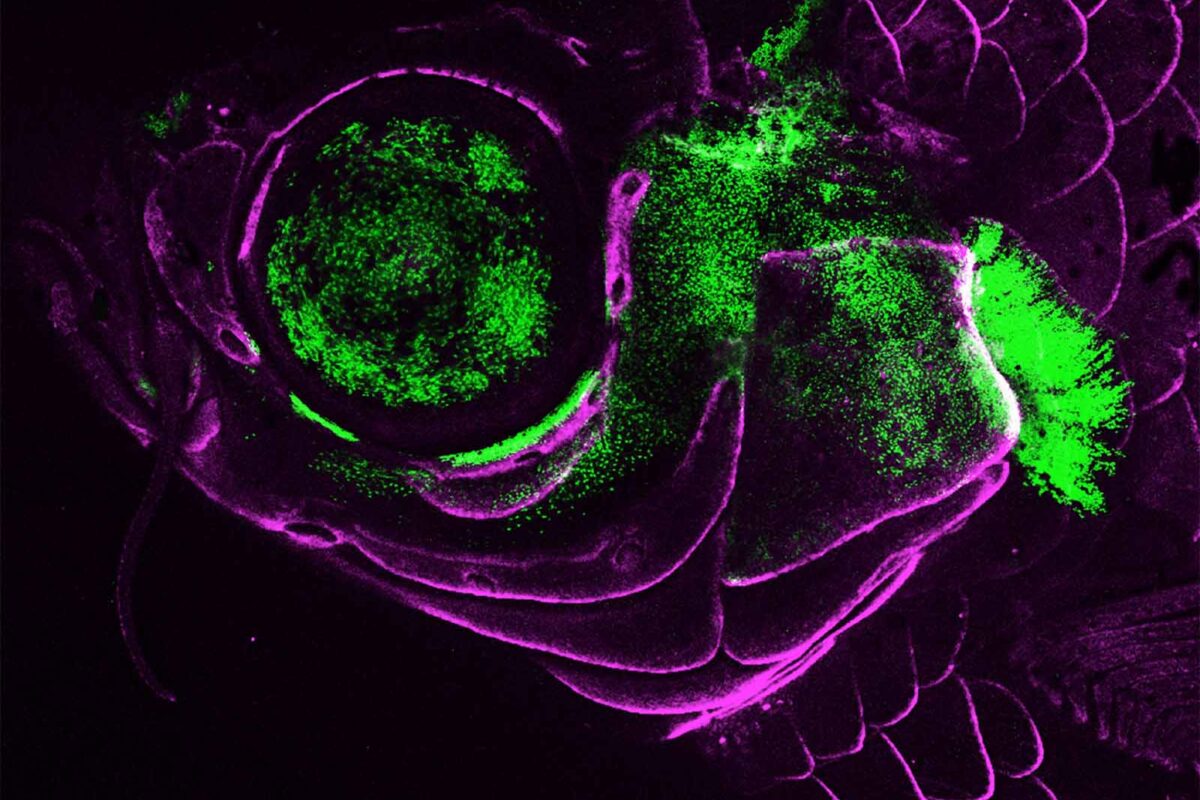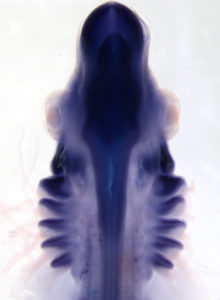
The emergence of jaws in primitive fish allowed vertebrates to become top predators. What is less appreciated is another evolutionary innovation that may have been just as important for the success of early vertebrates: the formation of covers to protect and pump water over the gills. In a new study published in the Proceedings of the National Academy of the Sciences (PNAS), USC Stem Cell scientists and their collaborators have identified a key modification to the genome that led to the evolution of gill covers more than 430 million years ago.
The scientists started by creating zebrafish with mutations in a gene called Pou3f3. Strikingly, fish lacking this gene, or the DNA element controlling its activity in the gills, failed to form gill covers. Conversely, zebrafish producing too much Pou3f3 developed extra rudimentary gill covers.
Intrigued by these findings, co-corresponding authors Gage Crump and Lindsey Barske collaborated with scientists from several universities to explore whether changes in Pou3f3 might account for the wide variation in gill covers across vertebrates. Crump is a professor of stem cell biology and regenerative medicine at USC. Barske initiated the study in the Crump lab, and is now an assistant professor at Cincinnati Children’s Hospital Medical Center.
In jawless fish such as sea lampreys, which lack gill covers, the scientists found that the control element to produce Pou3f3 in the gill region is missing.

In contrast, in cartilaginous fish such as sharks and skates, the control element for Pou3f3 is active in all gills. Correspondingly, nearly all cartilaginous fish have a separate cover over each gill. In bony fish, including zebrafish, the control element produces Pou3f3 in one particular region, leading to a single cover for all gills.
“Remarkably, we have identified not only a gene responsible for gill cover formation,” said Crump, “but also the ancient control element that allowed Pou3f3 to first make gill covers and then diversify them in cartilaginous versus bony fish.”
Barske and Crump even showed that humans retain this control element, reflecting the presence of gill cover-like structures in human embryos that are inherited from our distant fish ancestors.
Additional authors were Peter Fabian, Pengfei Xu, Nellie Nelson, and Haoze Vincent Yu from USC; Tyler Square, David Jandzik, and Daniel M. Medeiros from the University of Colorado; and Christine Hirschberger from the University of Cambridge, UK; and J. Andrew Gillis from the University of Cambridge, UK, and the Marine Biological Laboratory, Woods Hole.
Funding was provided by the National Institute of Dental and Craniofacial Research (R35 DE027550, R00 DE026239, and R21 DE025940A), the National Institute on Deafness and Other Communication Disorders (R01 DC015829), the National Science Foundation (IOS 1744837), the A.P. Giannini Foundation, the Cincinnati Children’s Research Foundation, the Scientific Grant Agency of Slovak Republic (VEGA 1/0415/17), a Royal Society University Research Fellowship (UF130182), a Isaac Newton Trust award (14.23z), and a BBSRC Doctoral Training Partnership studentship. The bioinformatics software and computing resources were funded by the USC Office of Research, the USC Norris Medical Library, Cincinnati Children’s Research Foundation, and the Hearing Health Foundation.
